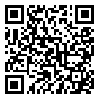Volume 19, Issue 2 (1-2020)
ijdld 2020, 19(2): 93-102 |
Back to browse issues page
Download citation:
BibTeX | RIS | EndNote | Medlars | ProCite | Reference Manager | RefWorks
Send citation to:



BibTeX | RIS | EndNote | Medlars | ProCite | Reference Manager | RefWorks
Send citation to:
Akbari A, Mohebbi H, Tabari E. THE EFFECTS OF HIGH FAT DIET-INDUCED OBESITY AND INTERVAL AND CONTINUOUS EXERCISE TRAINING ON VISCERAL FAT SIRT1 AND INSULIN RESISTANCE IN MALE RATS. ijdld 2020; 19 (2) :93-102
URL: http://ijdld.tums.ac.ir/article-1-5916-en.html
URL: http://ijdld.tums.ac.ir/article-1-5916-en.html
1- Department of Exercise Physiology, Faculty of Physical Education and Sport Sciences, University of Guilan, Rasht, Iran
2- Department of Exercise Physiology, Faculty of Physical Education and Sport Sciences, University of Guilan, Rasht, Iran , mohebbi_h@yahoo.com
2- Department of Exercise Physiology, Faculty of Physical Education and Sport Sciences, University of Guilan, Rasht, Iran , mohebbi_h@yahoo.com
Abstract: (3250 Views)
Background: The aim of this study was to investigate the effects of high fat diet-induced obesity and interval and continuous exercise training on visceral fat SIRT1 and insulin resistance in male rats.
Method: Forty male rats were divided into two groups: high-fat diet (HFD; n=32) and standard diet (C; n=8). After 10 weeks inducing obesity, eight rats from the HFD and C groups were sacrificed, and rest of obese rats were randomly divided into three groups: obesity control (OC), moderate intensity continuous training (MICT) and high intensity interval training (HIIT). The HIIT and MICT protocols were performed for 12 weeks and 5 sessions per week. Visceral fat samples were collected to measure protein levels of SIRT1 by western.
Results: Induction of obesity was associated with a significant decrease in visceral fat SIRT1 and an increase in insulin resistance (P˂0.05). In contrast, both HIIT and MICT significantly increased visceral fat SIRT1 protein levels (P˂0.05), whereas HIIT effects were significantly higher (P˂0.05). Also, both HIIT and MICT protocols improved insulin resistance (P˂0.05).
Conclusion: Exercise training is likely to play an important role in regulation of visceral fat SIRT1 and because of that may be effective in improving insulin resistance. The increase in SIRT1 also appears to be dependent on the intensity of exercise training.
Method: Forty male rats were divided into two groups: high-fat diet (HFD; n=32) and standard diet (C; n=8). After 10 weeks inducing obesity, eight rats from the HFD and C groups were sacrificed, and rest of obese rats were randomly divided into three groups: obesity control (OC), moderate intensity continuous training (MICT) and high intensity interval training (HIIT). The HIIT and MICT protocols were performed for 12 weeks and 5 sessions per week. Visceral fat samples were collected to measure protein levels of SIRT1 by western.
Results: Induction of obesity was associated with a significant decrease in visceral fat SIRT1 and an increase in insulin resistance (P˂0.05). In contrast, both HIIT and MICT significantly increased visceral fat SIRT1 protein levels (P˂0.05), whereas HIIT effects were significantly higher (P˂0.05). Also, both HIIT and MICT protocols improved insulin resistance (P˂0.05).
Conclusion: Exercise training is likely to play an important role in regulation of visceral fat SIRT1 and because of that may be effective in improving insulin resistance. The increase in SIRT1 also appears to be dependent on the intensity of exercise training.
Keywords: High Intensity Interval Training, Moderate Intensity Continuous Training SIRT1, Insulin Resistance, Obesersian Gulf Highway, Rasht, Guilan Province, Iran
Type of Study: Research |
Subject:
General
Received: 2020/01/6 | Accepted: 2020/03/16 | Published: 2020/02/29
Received: 2020/01/6 | Accepted: 2020/03/16 | Published: 2020/02/29
Send email to the article author
| Rights and permissions | |
 |
This work is licensed under a Creative Commons Attribution-NonCommercial 4.0 International License. |





